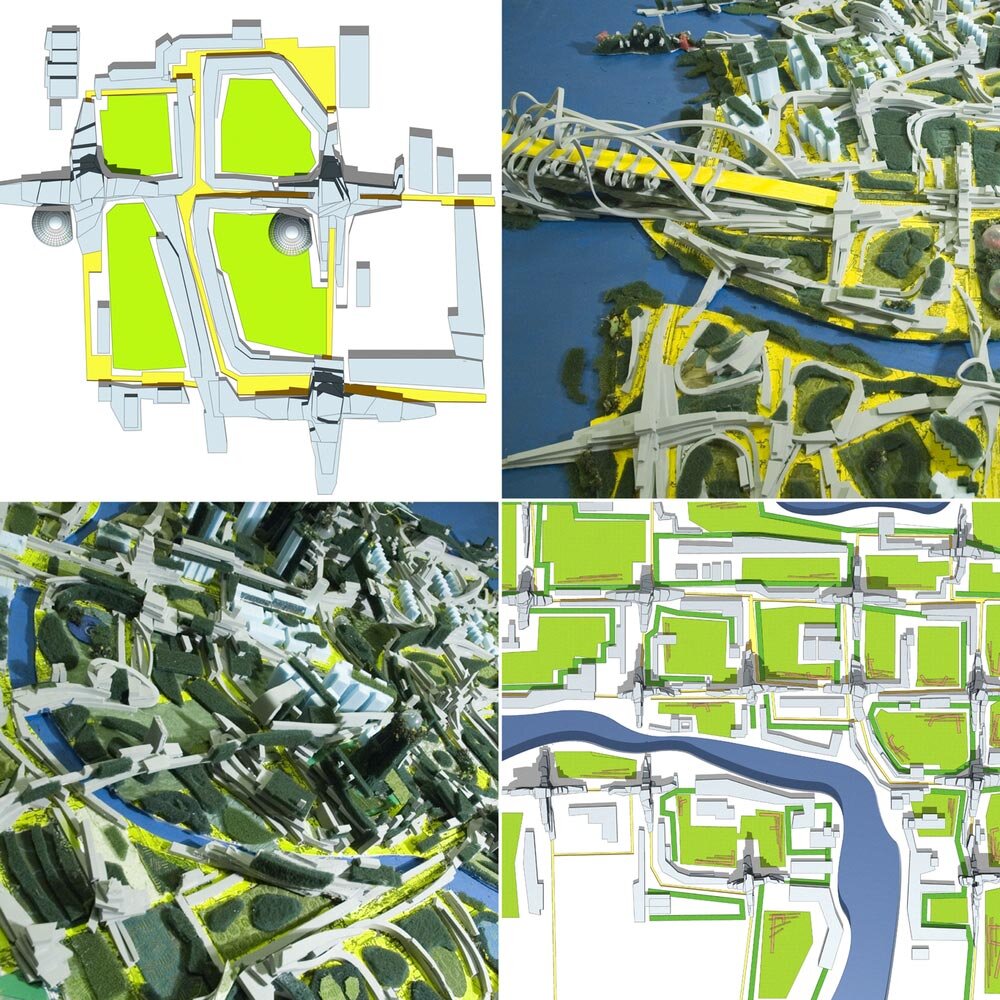NEW YORK 2106: SELF SUFFICIENT CITY
HISTORY CHANNEL: CITY OF THE FUTURE COMPETITION WINNER
Our project seeks to reinforce what is best about the city – in both its forms and its life –by speculating about the consequences of a radically new level of sustainability. We base our project on one clarifying hypothesis: in the future New York will become self-sufficient in its vital necessities, including energy, food, water, air supply, employment, housing, manufacture, movement systems, waste processing, and cultural life. We propose transformation via a radical strategy: the reversal of figure and ground, of public and private property. We begin with citywide "greenfill," the immediate transfer of half the aggregate of street space from the vehicular to the pedestrian and public realm.
Terreform proposes covering New York City with vertical gardens and urban farms to become self-sufficient.
Later, the streets become building sites and, as new, highly autonomous, buildings grow in intersections and wind their way down streets and avenues and through vacant lots, the old, deteriorated, fabric will fade away to be replaced both by an abundance of productive green space and by a new labyrinth of irregular blocks, a paradise for people on foot. Fast movement will be accomplished underground in a superbly modernized subway and along the rivers and new cross-island channels. The city streets – extended in their length but reduced in their area – will support a marvelous technology we know to be just over the horizon, some fabulous and slow conveyance summoned with a whistle or collapsed into a pocket.
Volunteers: Mitchell Joachim, Makoto Okazaki, Kent Hikida, Serdar Omer, Andrei Vovk, Noura Al Sayeh, Byron Stigge, Nathan Leverence, Oliver Medvedik, Lukas Lenherr, Matt Kipilman, Adam Watson, Craig Schwitter
Part-time salaried critic: Michael Sorkin
1. New York Times cover story
2. Architect Magazine
3. NY Press









